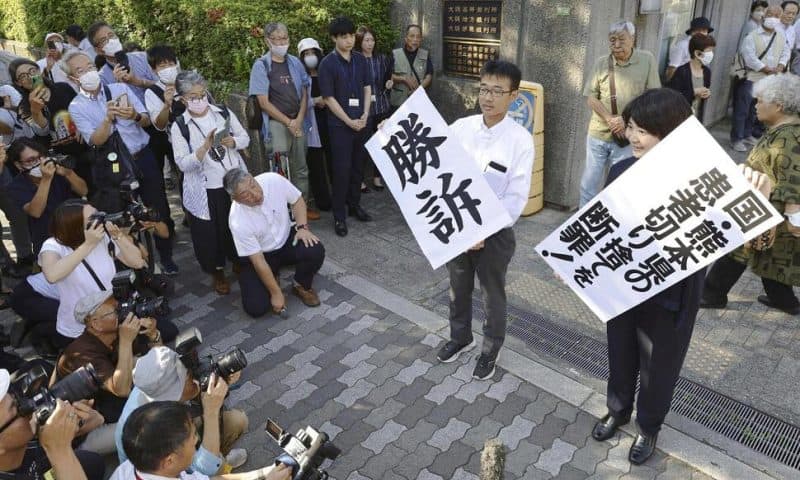A Japanese court has ordered the central government, the Kumamoto prefecture and a chemical company to recognize more than 120 plaintiffs as patients of the decades-old Minamata mercury poisoning and pay compensation they have been denied because they developed symptoms after moving away from the region
TOKYO — A Japanese court on Wednesday ordered the central government, the Kumamoto prefecture and a chemical company to recognize more than 120 plaintiffs as patients of the decades-old Minamata mercury poisoning and pay compensation they have been denied because they developed symptoms after moving away from the region.
The Osaka District Court recognized all 128 plaintiffs as Minamata disease victims and ordered the government, Kumamoto and Chisso Corp., which is held responsible for the pollution, to pay 2.75 million yen ($18,400) each, according to officials and media reports.
The plaintiffs, in their 50s and 80s, were living in Kumamoto and nearby Kagoshima at the time of the mercury poisoning and later moved to Osaka and elsewhere in western Japan. They filed a lawsuit in 2014, saying they were unfairly excluded from a 2009 compensation. They had demanded 4.5 million yen ($30,170) each, according to their lawyers.
In the ruling, Judge Yuki Tatsuno said the plaintiffs were presumed to have consumed fish tainted with mercury at levels high enough to develop the disease as children before moving away from the region. Their symptoms, including numbness of the limbs, were typical of the mercury poisoning and cannot be explained by any other cause, the ruling said.
“I’m so happy that the court made a fair decision,” said Yoshie Maeda, a 74-year-old who now lives in Osaka.
Yoshiyuki Tokui, a lawyer, praised the ruling as “epoch-making and one that will significantly push forward relief measures for Minamata disease.”
Minamata disease, first diagnosed in 1956, was later linked to the consumption of seafood from the Minamata Bay on Japan’s southern main island of Kyushu, where Chisso dumped mercury compounds.
It is one of Japan’s worst environmental disasters and became an international symbol of environmental damage and corruption behind Japan’s rise to economic prominence.
The central government had argued that there was no evidence to prove the plaintiffs suffered from Minamata disease.
Chief Cabinet Secretary Hirokazu Matsuno told reporters that the government will take appropriate measures to improve medical, welfare and community support.
Wednesday’s ruling is the first of several similar lawsuits also filed in Tokyo and Kumamoto, as well as Niigata in northern Japan, on behalf of about 1,700 people.
A 2004 Supreme Court ruling held the government responsible for allowing the pollution to continue for years after its discovery, prompting renewed calls for the government to expand the scope of support.
Under the special law for a new relief program that took effect in 2009, about 38,000 people became eligible for one-time payment or medical benefits, but nearly 9,700 people were rejected on grounds of age and place of residence. So far, only about 3,000 people have been officially certified as Minamata patients.

